

Table of contents
- Fast climbing balcony plants
- Selection aids and tips
- Location
- bucket
- Pour
- Fertilize
- climbing aids
- wintering
Fast-climbing balcony plants can be combined into one thanks to a trellis or other suitable climbing aids wonderful privacy screen, provide shade and can even have a filtering function against dust and dirt exhibit. In order for these advantages to be used, however, the right plants must be selected and they must be cared for accordingly. Because especially with the tub culture, some peculiarities can arise.
Fast climbing balcony plants
There are many climbing plants, but not all of them are suitable for the balcony. However, the following 10 ways have proven themselves for this:
clematis
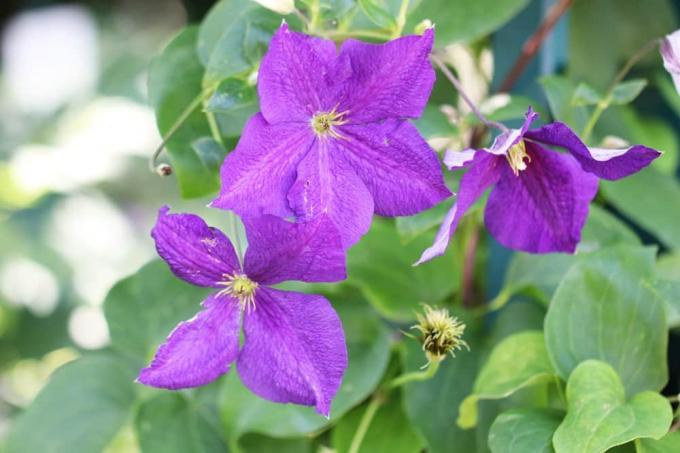
Clematis, also known as clematis, is available in numerous varieties. Small-flowered spring flowers such as mountain clematis and alpine clematis are particularly vigorous. Sunny balconies on the south or west side are recommended as locations. Care should be taken that the lower 50 centimeters of the plant should be in the shade, while the upper shoots should tolerate and get a lot of light. If the balcony railing does not provide enough shade, it should be made more opaque with a privacy screen.
Climbing aids made of plastic, rope or wood are recommended for the delicate shoots of the clematis. They can burn on metal in summer and suffer frost damage in winter. The climbing aid should also be made available to them at an early stage. With enough water and nutrients, clematis grow very quickly. It should also be noted that the climbing aid is a few centimeters away from the walls. In this way, the shoots can be well ventilated from all sides.
Tip:
Initially, clematis should be attached to the trellis with wire or string. This will stabilize them and pull them in the desired direction.
ivy
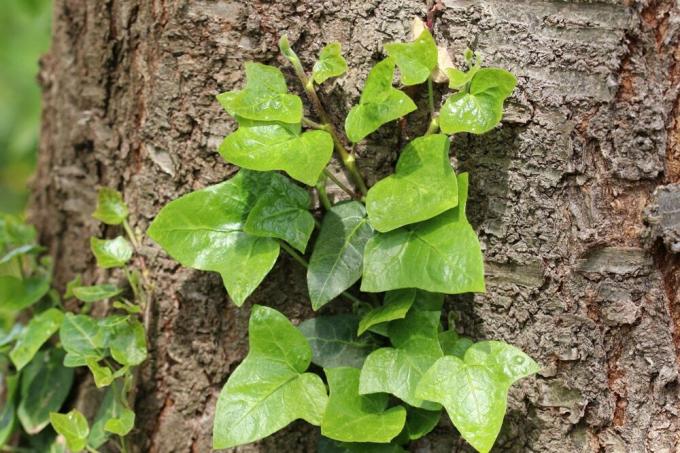
Ivy develops shoots up to 20 meters long and has adhesive roots. Basically, it does not need any climbing aids, it also grows on facades and railings - if it is not guided accordingly. This is also absolutely necessary if it is a rental apartment. Because the ivy leaves traces through the adhesive roots and is difficult to completely remove again.
Tip:
Care should therefore be taken to ensure that it remains attached to the trellis and does not become independent. If the shoots cannot be diverted, they should be cut. As a location, the ivy prefers an area without direct sun. This makes it ideal for shade and semi-shade and is ideal as a climbing plant for west-facing or north-facing balconies.
honeysuckle
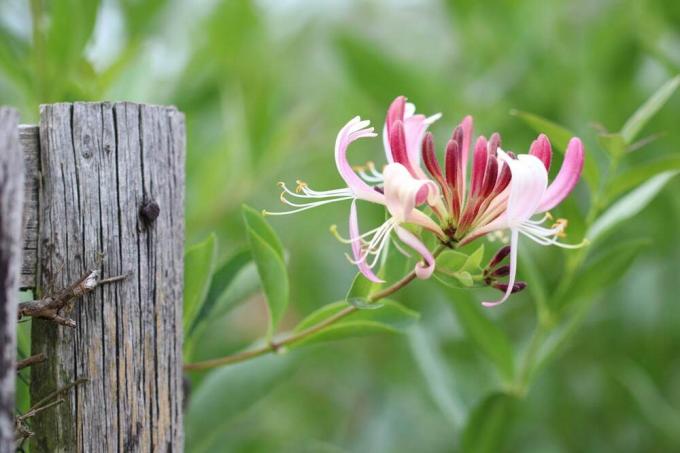
Also known as honeysuckle, honeysuckle is available in many different varieties. Some are only half a meter high, others eight meters. Some varieties are evergreen and not all tendrils. On the other hand, many honeysuckle varieties have an amazingly fast growth. If you want to get to the privacy screen particularly quickly, you should choose the evergreen honeysuckle. The plant is also known as Lonicera henryi and grows by up to one meter per year.
With regard to the location, the honeysuckle is not very demanding, but the lighting conditions should suit the respective variety.
bell vine
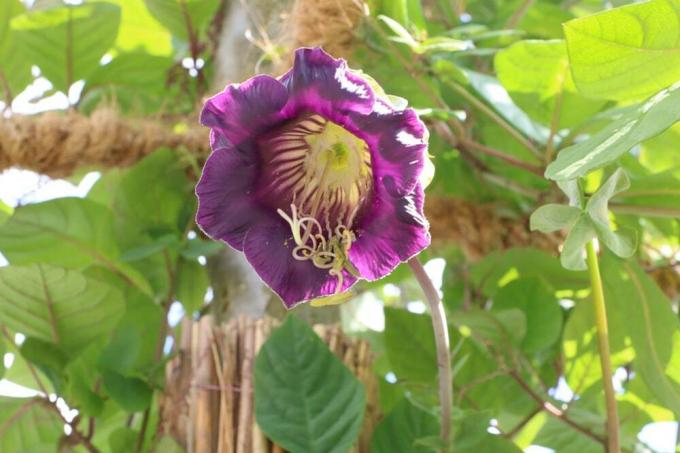
The bell vine is also traded under the names bell winds or claw winds and is fast-growing. It is particularly popular not only because of the privacy screen that can be created in a short time, but also because of its enchanting flowers. The location should be in full sun to partial shade. If the bell vine is too dark, growth and flowering will slow down. They should also be protected from the wind and adequately stabilized. If it is wintered indoors or at least well protected against frost, it is a perennial. It is advisable to prune them to a height of about half a meter to one meter before wintering. This makes shelter or wintering indoors easier.
jasmine
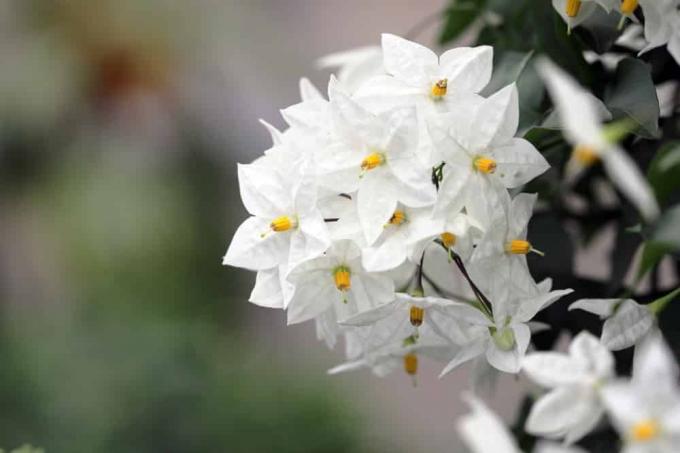
Protection from prying eyes and the sun and a breathtaking fragrance - that's exactly what jasmine has to offer. It needs a bright location, but is sensitive to the blazing midday sun and quickly suffers burns from it. Balconies facing east or west are therefore ideal.
Tip:
Since most jasmine varieties are sensitive to frost, they should not be placed on the balcony too early and should also be overwintered frost-free indoors. A blend is advisable in autumn or spring, but should only be radical with real jasmine, because other varieties do not recover from it so quickly.
Nasturtium
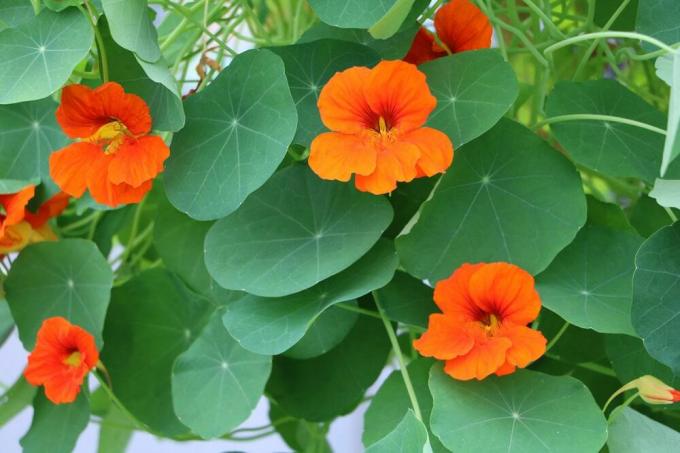
The flowers of the nasturtium are not only impressive, they are edible, as are the buds and seeds. So if you not only want a privacy screen and provide shade as a fast-climbing balcony plant, but also want to enrich your menu, this plant is the best choice.
Tip:
The nasturtium needs a sunny location for a particularly large number of flowers. In addition, plenty of water but sparing fertilization. If you want to produce flowers over a longer period of time, pinch off withered flowers. Additional stabilization on the climbing aid is not necessary in sheltered locations. However, the nasturtium is only an annual plant. So it has to be reset or removed every year.
Black-eyed Susanne

Black-eyed Susanne likes to be warm, sunny and sheltered, then she not only grows quickly, but also produces numerous flowers. If it is watered and fertilized sufficiently, it is quite resilient. In addition, the enchanting flower lasts until autumn if withered flowers and seed pods are removed early and regularly.
Tip:
Unfortunately, the black-eyed Susanne is often only cared for as an annual plant. With a bright hibernation between 10 and 15 °C, it can bring joy for many years and serve as a privacy screen. In order to save space in the winter quarters, it can be shortened to a height of 50 centimetres.
trumpet flower

The head in the sun, the roots in the shade - this is the ideal location for the trumpet flower. With the right care and climbing aid, it quickly becomes an opaque shade provider with rich flowers.
Tip:
So that it can be grown for several years, it should be overwintered cool but frost-free. It is practical that it tolerates cuttings well and can therefore be brought over the cold season in a space-saving manner.
Wine

Wine or Virginia creeper is one of the self-climbers and therefore does not actually need a climbing aid. So that it does not destroy the facade, it should be attached to and held in a targeted manner. Shoots that become independent should be reattached to the climbing aid or cut off immediately. Nothing needs to be considered when choosing the location for the wild wine. Full sun or shade, the fast-climbing balcony plant can spread everywhere. Provided it gets enough water and nutrients. Wine is also robust when blended and easily forgives even radical cuts. It could only be a problem with the bucket, because it has to be as large and stable as possible.
sweet peas

Sweet peas enchant with their blooms and grow quickly, but only reach a height of two meters. This is ideal on small balconies in particular, as it means that you don't have to cut waste and don't "overgrow" too much. Moderately sunny to semi-shady places are suitable as locations. The effort for watering and fertilizing should not be underestimated despite moderate sunshine. If you want to leave the vetch on the balcony during the winter, you should opt for the perennial vetch. With appropriate protection, it can even cope well in frost.
Selection aids and tips
Climbing, twining and climbing plants can be found in large numbers on the market. However, not every plant is suitable for every balcony. Therefore, when choosing, you should pay attention to the following conditions:
- location and lighting conditions
- tub and plant size
- maintenance effort
- wintering
Location
South side or north sunny or shady? Above all, the lighting conditions at the location play a decisive role in the selection of fast-climbing balcony plants. Common ivy also does well in the shade. Clematis, on the other hand, loses vigor and willingness to flower if it does not receive enough sunlight. In addition, the weather conditions should be taken into account. If strong wind and rain are to be expected, the choice should fall on a robust climbing plant.
bucket
The planter must be as stable and large as possible, because fast-climbing balcony plants need a lot of water and large amounts of nutrients. In the case of perennial plants, they should be even larger, since the substrate provides additional frost protection and thus simplifies wintering outdoors.
Pour
As mentioned, quickly climbing balcony plants need a lot of water. The rapid growth and the increase in leaf mass ensure high consumption and accelerated evaporation. The sunnier the location and the faster the plant grows, the greater the effort required for watering. It is therefore necessary to weigh up whether daily watering is possible in summer or whether a balcony plant that climbs more slowly should be selected to reduce the effort.
Fertilize
The same applies here: the faster the growth, the greater the effort. Since the plants are cultivated in tubs on the balcony, they have less substrate available. They are therefore less able to take care of themselves than in the wild. Regular and needs-based fertilization is therefore absolutely necessary.
Tip:
Effort and frequency can be reduced if a planter with the largest possible volume and pre-fertilized soil are chosen.
climbing aids

Espaliers, sticks, wire mesh or ropes - so that the quickly climbing balcony plants grow as desired can spread out and grow specifically as privacy screens or provide shade, they need the appropriate ones climbing aids. In rented apartments, care should also be taken to ensure that the facade is not damaged or overgrown by the tendrils. Climbing aids can also help here. When choosing, it is important to pay attention to the resilience and durability of the climbing aids. This is especially true for perennial, evergreen climbing plants. The following factors of the individual materials must be taken into account:
wireframe
Coated metal is less susceptible to weather-related damage. However, scratches or cracks in the coating can also cause rust on them. However, some wire mesh can easily be bent and cut to size, allowing for unusual shapes and quick adaptation to the balcony.
plastic
Over time, plastics become porous in the sun and can fade. However, they are very cheap to buy.
Wood
Natural and decorative, wooden trellises and climbing aids are available in many designs. However, it should be expected that it may fade, swell and chip. Wood preservatives can help.
ropes
In order to serve as a climbing aid, ropes must be stretched. The assembly is therefore more complex than with the other materials. On the other hand, they can be variably adapted to local conditions, are comparatively light and durable. Of course, variants should be chosen that are weatherproof.
wintering
Of course, the question does not arise with annual climbing balcony plants, but with perennials it can be problematic. Because many plants cultivated in buckets are not nearly as frost-resistant as outdoors. It may be possible to bring them indoors if the above-ground shoots die off in autumn anyway.
Appropriate protection must be fitted for all others. This should consist of the following components:
- Large volume pots, the bigger the better the roots are protected
- Set it up on a pallet or styrofoam to apply insulation underneath
- Wrap the tub and, if possible, the plant with garden fleece
- Pile up soil, straw, brushwood or mulch on top of the soil for additional frost protection
In addition, it should not be forgotten to water the plant on frost-free days and to prevent the soil from drying out completely. Many climbing balcony plants do not freeze to death in winter, but dry up.
 garden editorial
garden editorial I write about everything that interests me in my garden.
Learn more about balcony plants

Eisbegonia, Begonia: care instructions from A - Z
The ice begonia is one of the most popular bedding plants, because they are characterized by their robustness and willingness to flower. When caring for ice begonias, there are a few points to consider when fertilizing and watering. As a houseplant, it is perennial and can be overwintered.
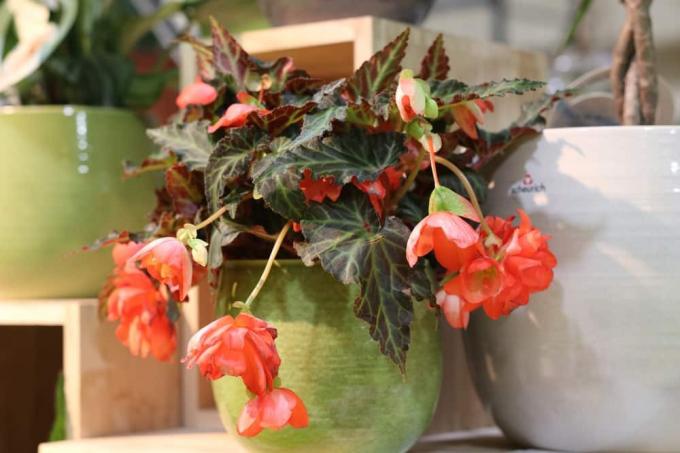
Begonia location: 3 important criteria
Begonias are easy-care plants. However, so that they can thrive and you can actually enjoy them, the location must be right. And that means above all: no direct sunlight, but shade or semi-shade. In addition, the soil should be as moist as possible.

Blue fan flower, Scaevola aemula: care from A - Z
Are you looking for an easy-care and robust flower for the balcony? Then the blue fan flower might just be the right plant for you!

16 popular hanging plants and how to care for them
Hanging plants aren't always a sad sight. At least not when nature intended it that way. Their tendrils weave a new dress on boring balcony walls in no time. Whether fast-growing, green, colorful or just easy to care for, every wish will be fulfilled.

13 balcony plants for sunny south-west balconies balcony flowers
A balcony with leafy or flowering plants delights both the heart and the eye. However, not every balcony plant is suitable for every balcony, because every plant makes specific demands on the location. We have put together for you which plants are particularly suitable for a south-west balcony.
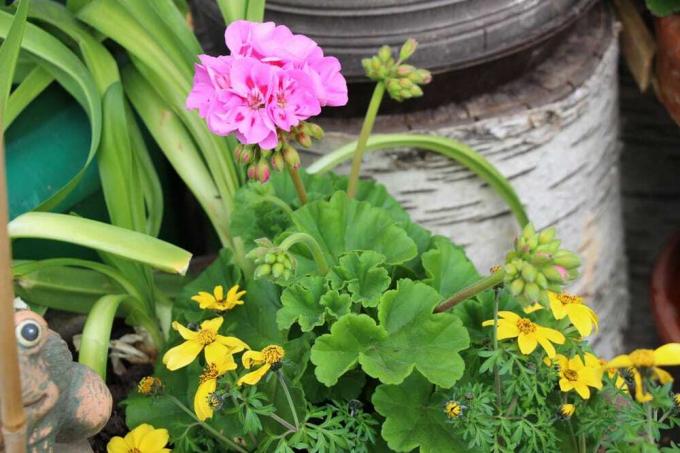
Scented geraniums: care, propagation and overwintering scented geranium
Is it the lush growth? The brightly colored flowers? Or is it its beguiling scent that makes the scented geranium our favourite? Does she have any other trump cards? Yes! As beautiful as she is, she is also undemanding. Your care succeeds!



